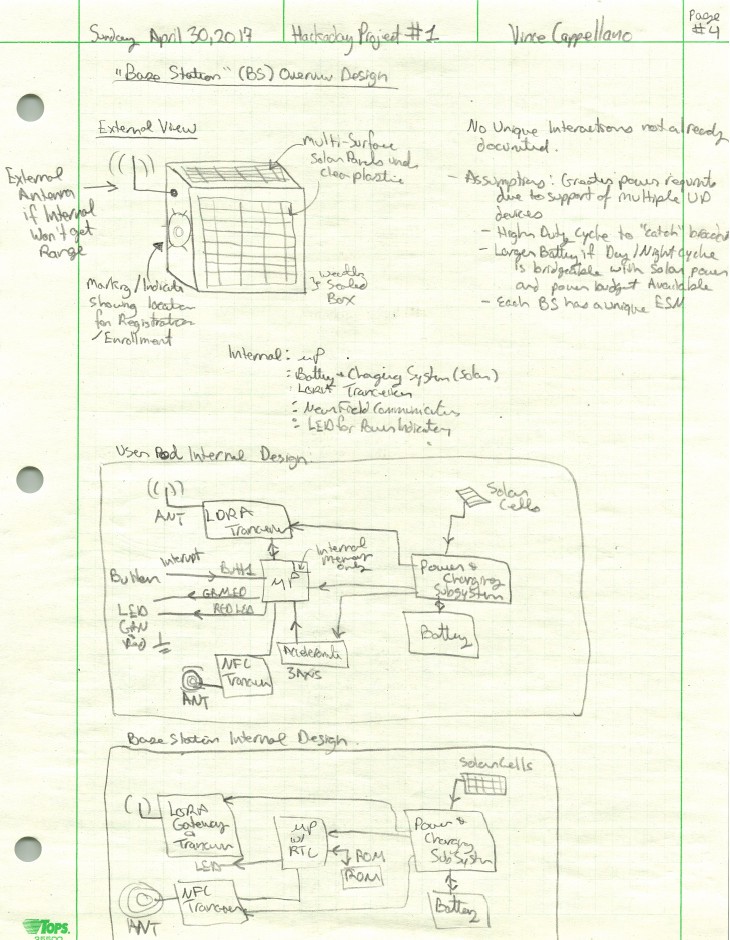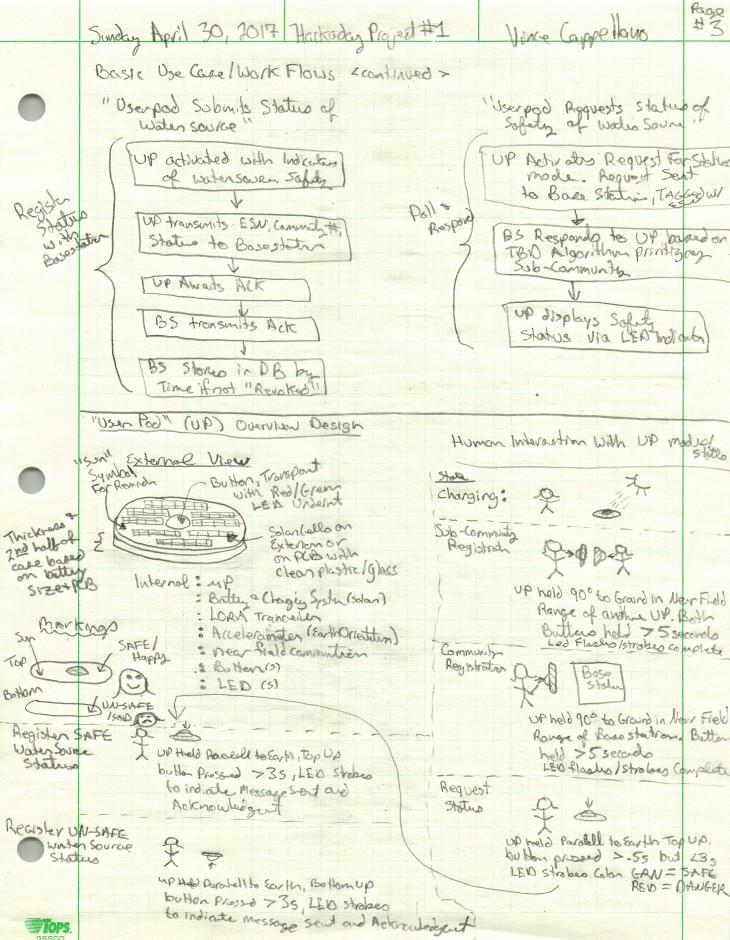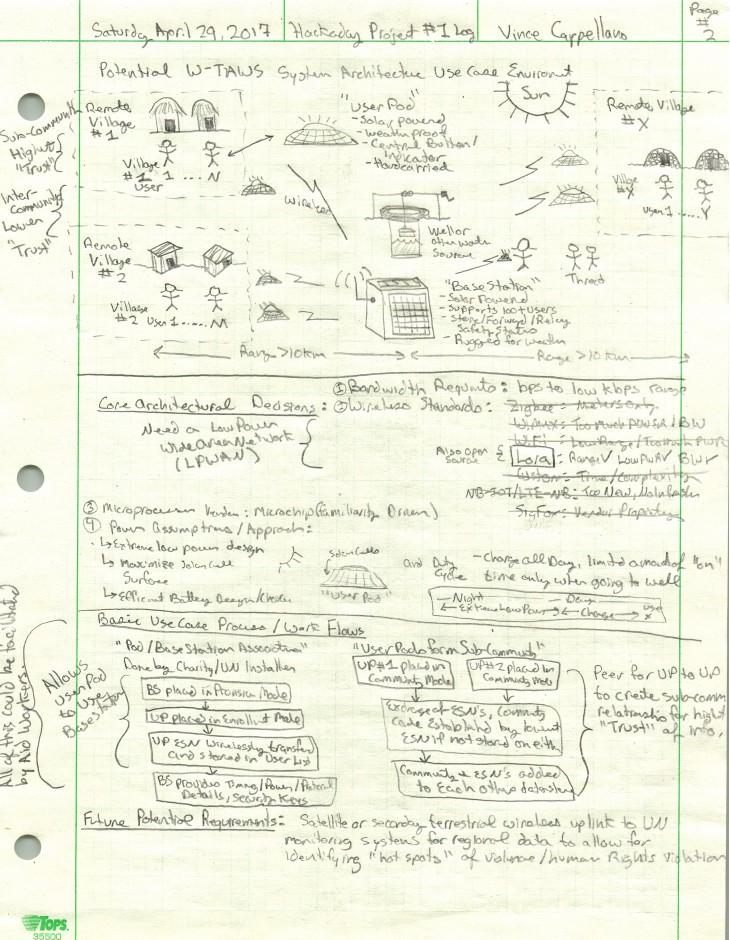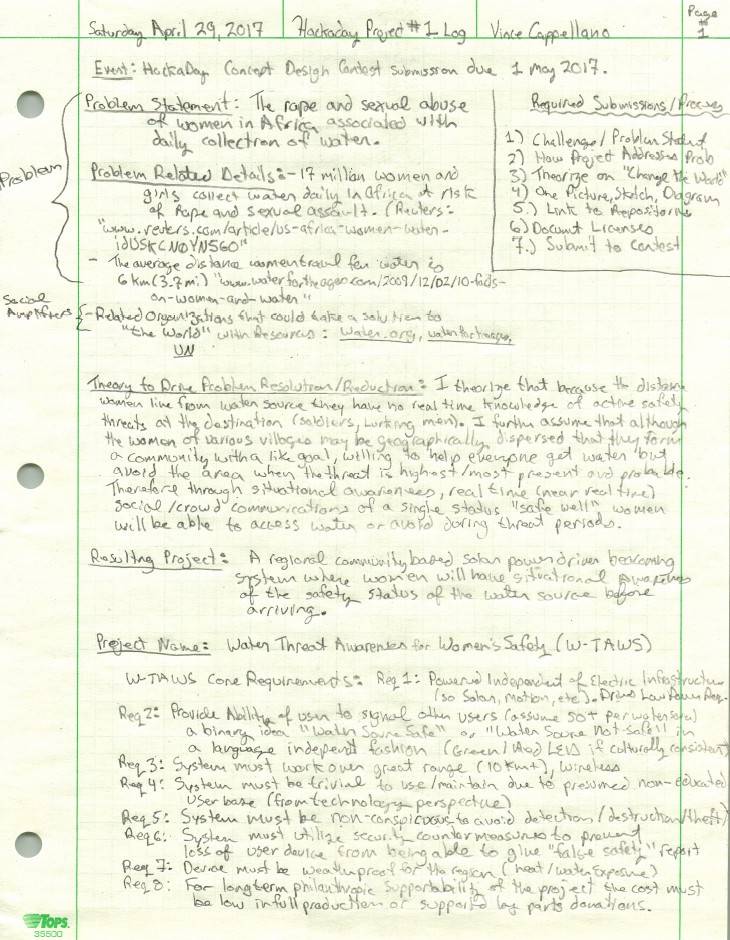The Water Threat Awareness for Women's Safety (W-TAWS) project seeks to empower women in community groups to be aware of the safety, or dangerous status, of their shared inter-community water source (well, etc) through a modular system based on Internet of Things (IOT) wireless technology, operating exclusively on solar power and independent of terrestrial Internet infrastructure.Consisting of a solar powered "base station" per water source, and a large number (>50) of "user pods" issued to women / families in supported communities, with women registering the threat and polling safety status from trusted fellow community members over distances of < = 10km.
Hackaday 2017 Contest Requirements:
Problem Statement: Identified / Documented continual rape and sexual assault of women in Africa, and other rural non-industrialized areas.
How Project Addresses Problem: By allowing women to tell each other through easy to use, solar powered, intuitive technology whether the water source is currently "Safe" or "Dangerous". Functioning over wireless using IOT standards (LoRa) and with a developed registration, sub-community high trust, external community basic trust, and unit revocation no-trust arrangements that are intuitive women will see from a simple visual indicator the relative safety of the water source. They are empowered to help each other, by being the ones to notify others of the status of the water source when they are making their trip. Registered with the solar powered base station other will see that status based on their trust arrangements when they poll the system by a simple tap of their user pod.
How it could Change the World: One does not have to industrialize rural Africa for basic technologies to provide a simple enabled piece of situational awareness information that is of vital safety importance to women in Africa. Simply enable them to protect each other with information. Water.org (just need Matt Damon), the UN, and others have massive infrastructure around fixing water related issues in the developing world, if one of them refined and massed produced this system they could make a real difference, I'd recommend an initial prototype deployment to a sample village to refine the system, use cases, workflow, and feature set prior to mass production.
Sketch / Diagram: Included in image files / logs
Link to Repositories: No external repositories used at this time.
Licenses: Every log, note, schematic, source code, binary file, pcb layout, produced gerber, and supporting documentation will be released as complete and free open source for any purpose, with any software equally open source but more appropriately noted as "unlicense" (https://choosealicense.com/licenses/unlicense/) with no warranty. The LoRa portions under the LoRa alliance will be sought from the existing open source projects and software, or the Eclipse Public Licensed IBM C stack. Development is slated for Microchip product suites for their toolsets, free versions only. No known licensing issues limit the ability of this project to be taken forward to help people.
 Vince Cappellano
Vince Cappellano


